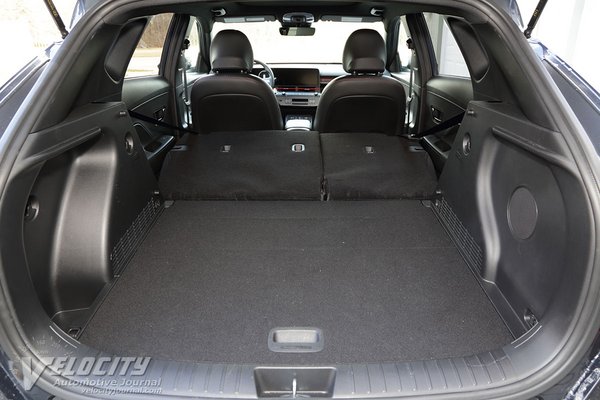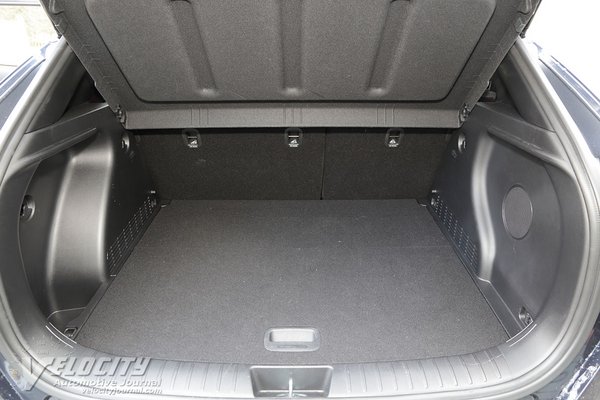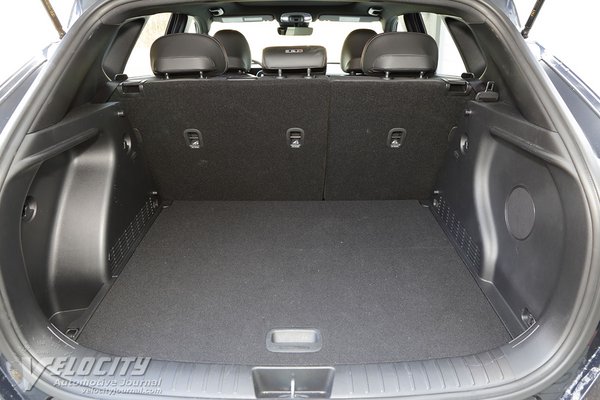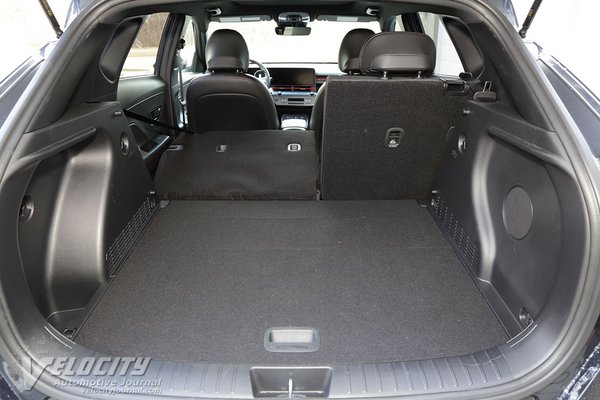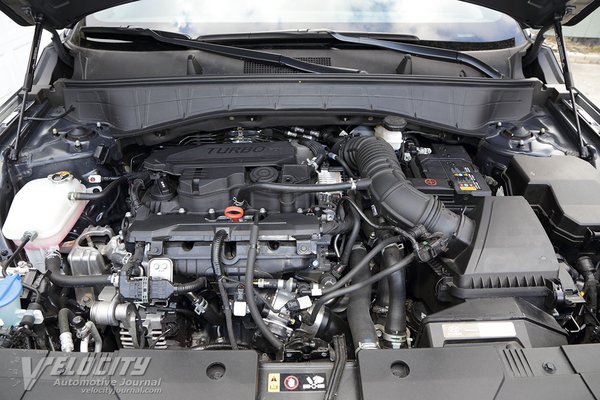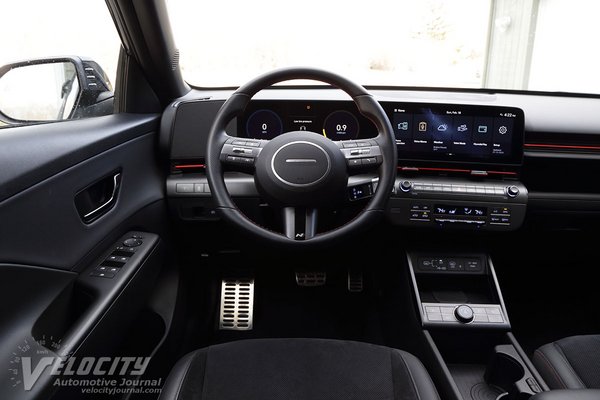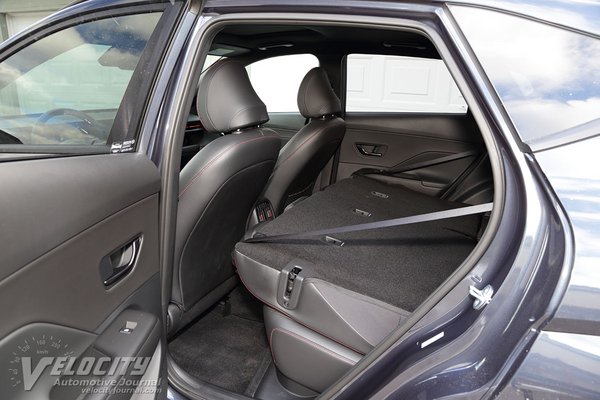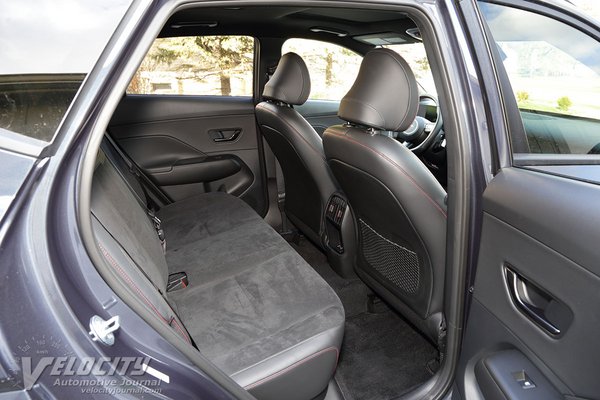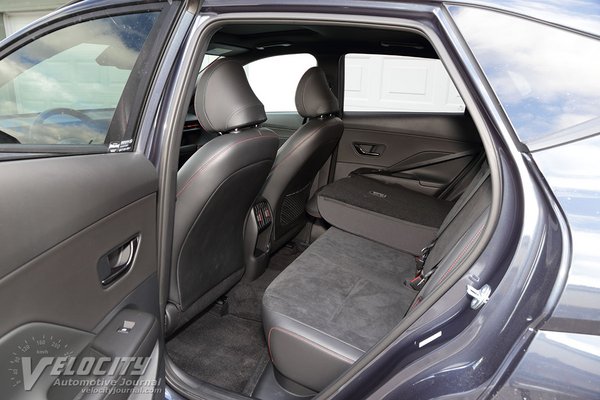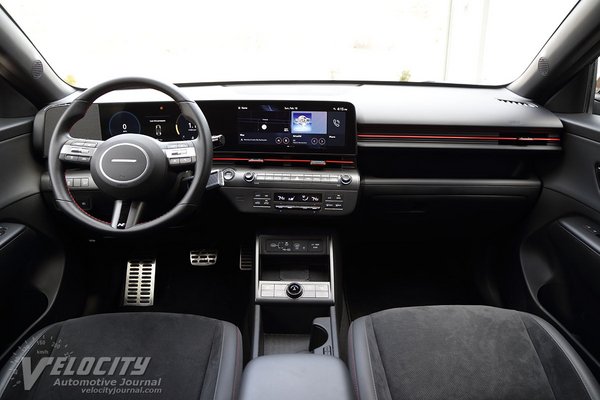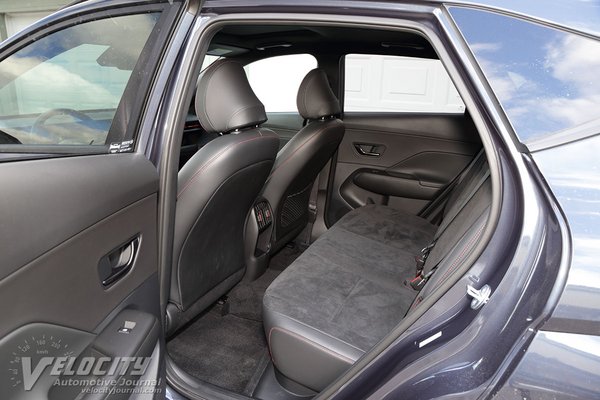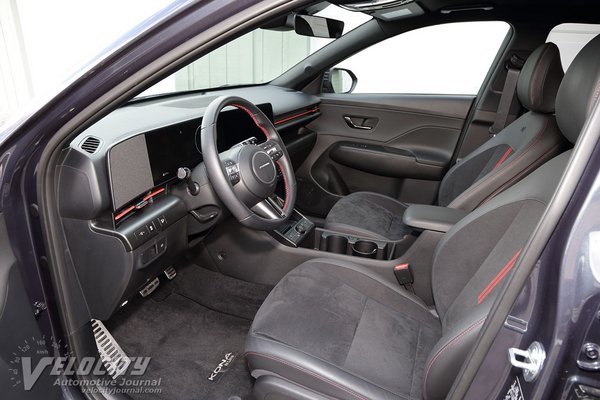2024 Hyundai Kona N Line
05/06/2024
Shahed Hussain
Hyundai recently launched the 2nd generation Kona, its compact SUV slotted below the entry-level Venue and the larger Tucson. Larger than its predecessor, the Kona is available in four gas-powered models (SE, SEL, N Line), plus the Kona Electric. Pricing for the gas Kona begins at $24,250 (SE) and ranges up to the $31,800 (Limited). The Kona Electric starts $32,675 (SE) and tops out at $41,045 (Limited).
We tested the Kona N Line ($30,800). Options included AWD ($1,500) and 2-tone paint ($470). Adding the $1,375 freight charge added up to $34,145. Significant standard equipment consists of 19-in. alloy wheels, sunroof, rear spoiler, leather/simulated suede seats, power driver's seat, heated front seats, 12.3-in. infotainment display, navigation, rearview monitor, Android Auto and Apple CarPlay, and Bose audio system.
Two powertrains are available: a 147-hp 2.0L inline-4 (SE, SEL) mated to a CVT, or a 1.6L turbo four (N Line, Limited) coupled to an 8-speed automatic. The all-aluminum direct-injected 1.6L turbo develops 190-hp @ 6,000 RPM and 195 lb.-ft. @ 1,700-4,500 RPM. Replacing the previous 7-speed DCT is an 8-speed torque converter automatic sending power to the front or all four wheels. The Kona's AWD system is on-demand, engaging the rear axle as needed. Normal, Sport and Snow modes alter the drivetrain settings for different road conditions. According to EPA estimates, the Kona N Line is rated for 24/29 MPG (city/hwy.)
Hyundai suspension design consists of MacPherson struts and a stabilizer bar in front. At the rear is multi-link setup with coil springs, gas-pressurized dampers, and a stabilizer bar (AWD only). Front-wheel drive Konas get a semi-independent torsion beam rear suspension. Brakes are all-disc: 12.0-in. dia. front rotors and 11.2-in. dia. rear rotors. A motor-assisted rack-and-pinion steering system is geared for 2.5 turns lock-to-lock. Kona curb weights range from 3,005 lbs. (SE FWD) to 3,505 lbs. (Limited AWD). The N Line AWD weighs in at 3,483 lbs.
Inside the new Kona, it's evident that the design team made significant design enhancements and material upgrades. Most interior surfaces are padded, but some door panels still use hard plastics. Polished aluminum interior trim and pedals add contrast to the predominantly gray interior hues. Red seat stitching and vents distinguish the N Line from other Konas.
Hyundai has adopted tablet-style gauge displays in some of their newer vehicles such as the Santa Cruz and Ioniq 5. The Kona takes this trend further by combining the gauge and infotainment displays into a single screen. Instead of the typical analog speedometer and tachometer, Hyundai used a simplified digital display. The leather-wrapped steering wheel has phone, audio and cruise controls on the spokes. Instead of its unconventional 4-spoke designs, Hyundai reverted to a classic 3-spoke steering wheel. Climate control settings are on the center stack below the infotainment display. Dual USB-C ports and a 12V power outlet provide connectivity and power to charge portable electronics. A drive mode knob adjusts powertrain settings on the center console. Dual cupholders are in the storage bin between the front seats.
The Kona N gets special seats in perforated suede-like fabric and simulated leather. Lateral support is excellent, but the seat cushions are too firm. Rear seats are similarly padded and are barely tolerable for short trips. Front and rear headroom is acceptable for people up to 6 ft. tall. Rear legroom is decent, but taller passengers will need cooperative front seat occupants.
Hyundai's 1.6L turbo also powered the first-generation Kona as an optional powerplant. As is typical for small turbo fours, producing usable torque depends on if the turbo is spun up. Below 2,000 RPM, throttle response is marginal, but rapidly improves as revs climb past 2,000 RPM. The turbo four delivers decent midrange torque so highway acceleration is acceptable. Torque steer is absent as the AWD system shifts power to the rear wheels as needed. Opting for the base 2.0L and CVT powertrain is viable for the FWD Kona SE or SEL, but we would only consider the 1.6L turbo for AWD models.
Compared to the previous 7-speed DCT, the new 8-speed automatic's shift quality is significantly smoother. We occasionally used the steering wheel-mounted paddles for immediate downshifts on demand, but usually left the transmission in fully automatic mode. Rotating the center console powertrain knob between Power and Normal modes revealed minimal differences in perceived acceleration.
Hyundai tuned the Kona's suspension for a firmer ride than other SUVs in its class. Body motions are quickly damped, yet potholes and frost heave impacts are filtered out. On winding roads, the suspension minimizes body roll to maintain precise tracking. The Kona's motor-assisted steering has low effort, useful in maneuvering through urban traffic. Quick steering response contributes to the Kona agile feel. At highway speeds, the light steering demands frequent steering corrections in crosswinds and bumpy roads. The Kona's all-disc brakes deliver decent stopping power and progressive pedal effort.
Hyundai allocated significant development resources to elevate the Kona to the same level as other compact SUVs. The result is a Kona much improved over its predecessor, yet this Hyundai falls short in seat comfort and steering. Both deficiencies are easily correctable, but until then, prospective customers should insist on an extended highway test drive before committing their cash.

